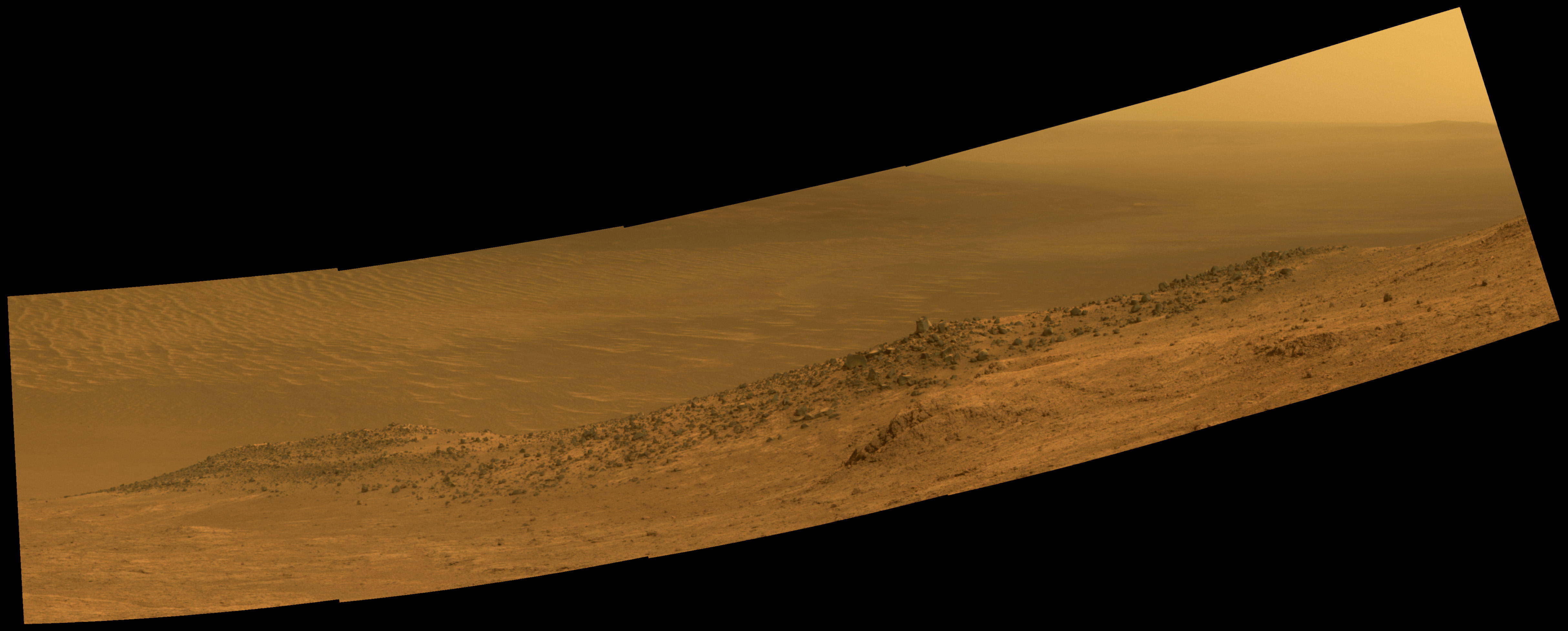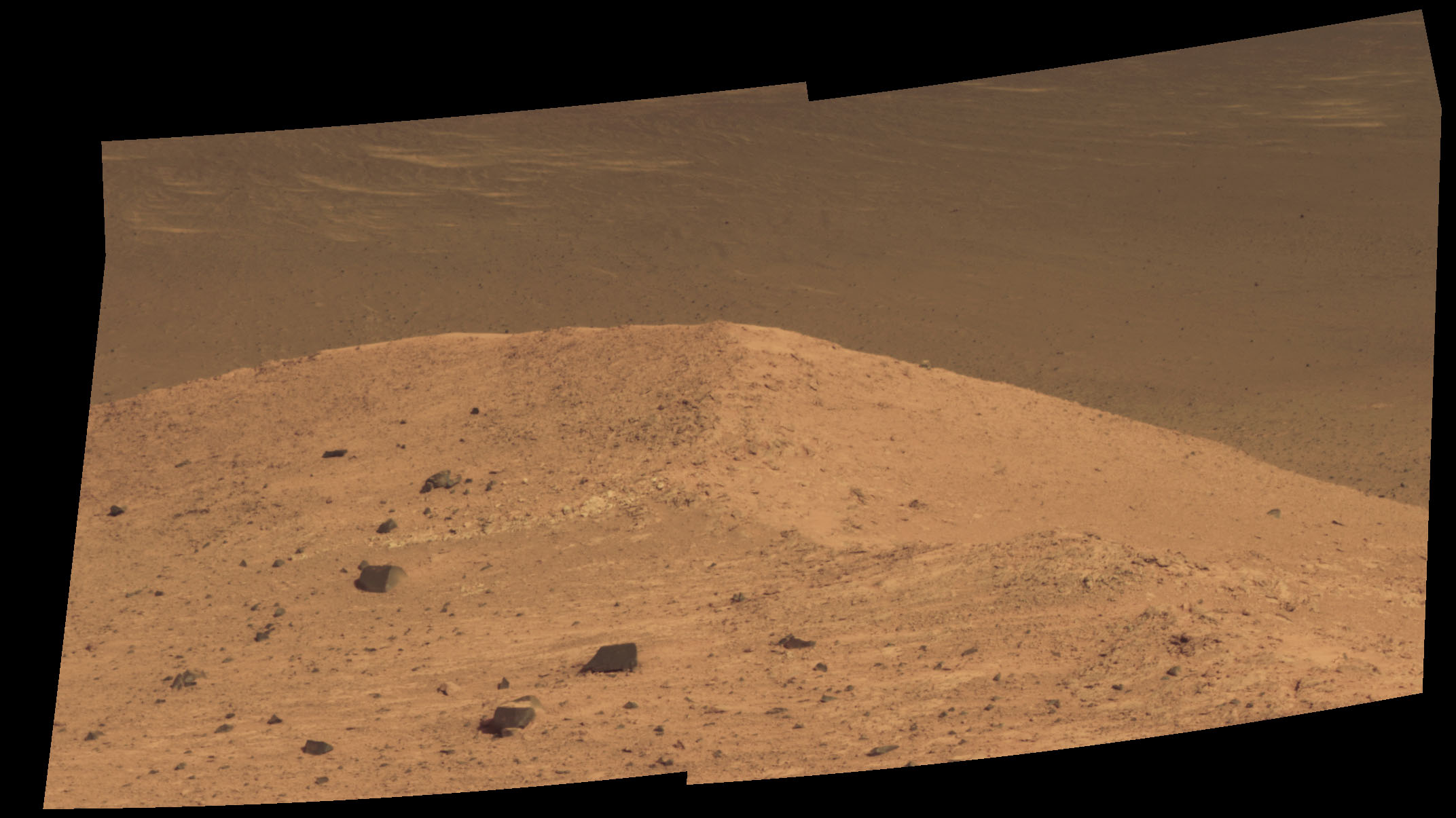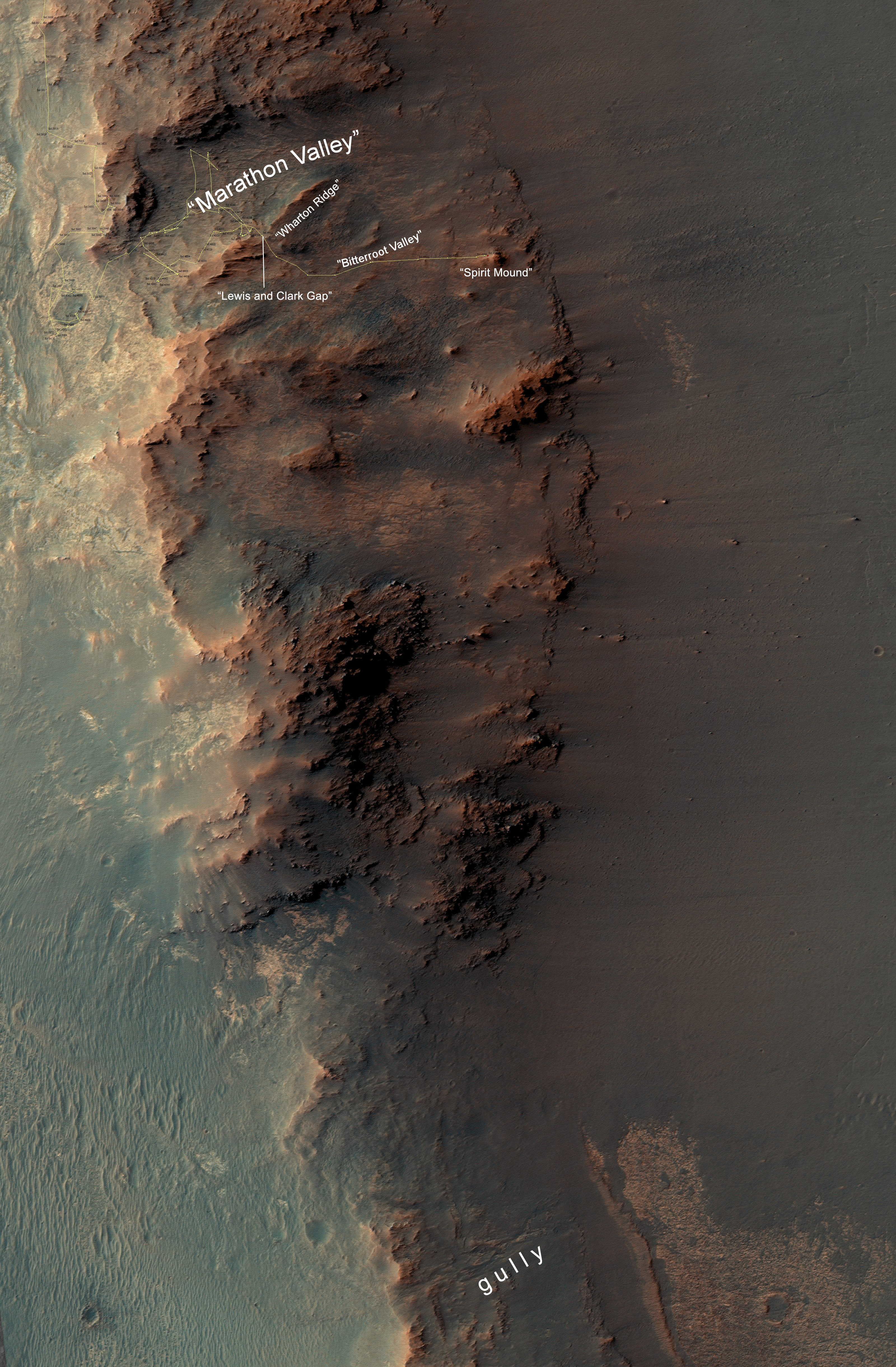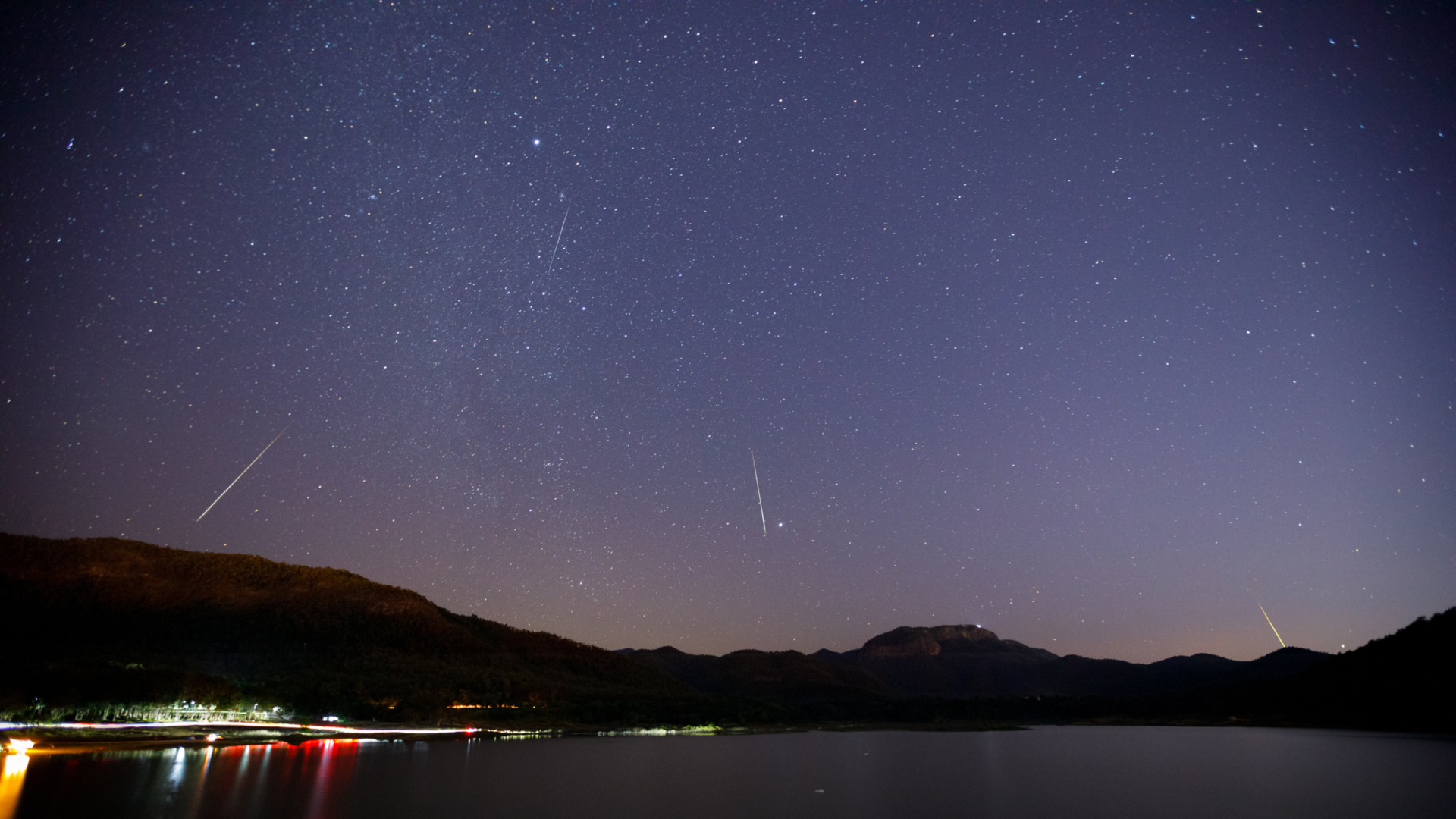Mars Rover Opportunity to Make Daring Descent into Gully

NASA's Opportunity rover is still having grand adventures more than 12 years after touching down on Mars. Now, the agency plans to send Opportunity into a gully that may have been shaped by water in the ancient past.
Opportunity's daring descent will be a first for a Mars rover, and it could yield significant insight into how Red Planet gullies form. A debate has been raging for years about whether these features are created by dry ice, liquid water or other processes.
Recent observations by NASA's Mars Reconnaissance Orbiter, for example, show no evidence of "abundant liquid water or its byproducts" at more than 100 gully sites, the agency announced in July. (Such byproducts could include clays or other minerals that form in the presence of water.) [The Search for Water on Mars in Photos]
But Opportunity's handlers think that water did shape the gully they've chosen to explore, which stretches east to west for about 200 yards (180 meters) on the rim of the 14-mile-wide (22 kilometers) Endeavour crater.
"We are confident this is a fluid-carved gully, and that water was involved," Opportunity principal investigator Steve Squyres, a planetary scientist at Cornell University in Ithaca, New York, said in a statement.
"Fluid-carved gullies on Mars have been seen from orbit since the 1970s, but none had been examined up close on the surface before," Squyres added. "One of the three main objectives of our new mission extension is to investigate this gully. We hope to learn whether the fluid was a debris flow, with lots of rubble lubricated by water, or a flow with mostly water and less other material."
That two-year extension began Oct. 1. If all goes according to plan, Opportunity will move down the entire gully's length and look around on the floor of Endeavour, whose rim the rover has been exploring since August 2011. Opportunity will also compare rocks found inside the crater to those it looked at on the rim, to see if they are similar.
Breaking space news, the latest updates on rocket launches, skywatching events and more!
"We may find that the sulfate-rich rocks we've seen outside the crater are not the same inside," Squyres said. "We believe these sulfate-rich rocks formed from a water-related process, and water flows downhill. The watery environment deep inside the crater may have been different from outside on the plain —maybe different timing, maybe different chemistry."
Opportunity landed on Mars in January 2004 for what was originally intended to be a three-month mission. A twin rover called Spirit landed on Mars the same month; Spirit died during the Martian winter of 2010. Both rovers have found extensive evidence of ancient water on the Martian surface.
The golf-cart-size Opportunity is showing some signs of its advanced age. For example, its flash-based memory doesn't work well anymore, making long-term storage difficult. So NASA must beam home the information Opportunity gathers each day, or lose it forever.
In the past few months, Opportunity has been exploring a region called Marathon Valley on the western rim of Endeavour crater, looking at water-related minerals that were previously discovered through orbital observations. This week, the rover is looking at rock exposures near so-called Spirit Mound, which is in the Bitterroot Valley portion of Endeavour's rim, NASA officials said.
Follow Elizabeth Howell @howellspace, or Space.com @Spacedotcom. We're also on Facebook and Google+. Originally published on Space.com.

Elizabeth Howell (she/her), Ph.D., was a staff writer in the spaceflight channel between 2022 and 2024 specializing in Canadian space news. She was contributing writer for Space.com for 10 years from 2012 to 2024. Elizabeth's reporting includes multiple exclusives with the White House, leading world coverage about a lost-and-found space tomato on the International Space Station, witnessing five human spaceflight launches on two continents, flying parabolic, working inside a spacesuit, and participating in a simulated Mars mission. Her latest book, "Why Am I Taller?" (ECW Press, 2022) is co-written with astronaut Dave Williams.


